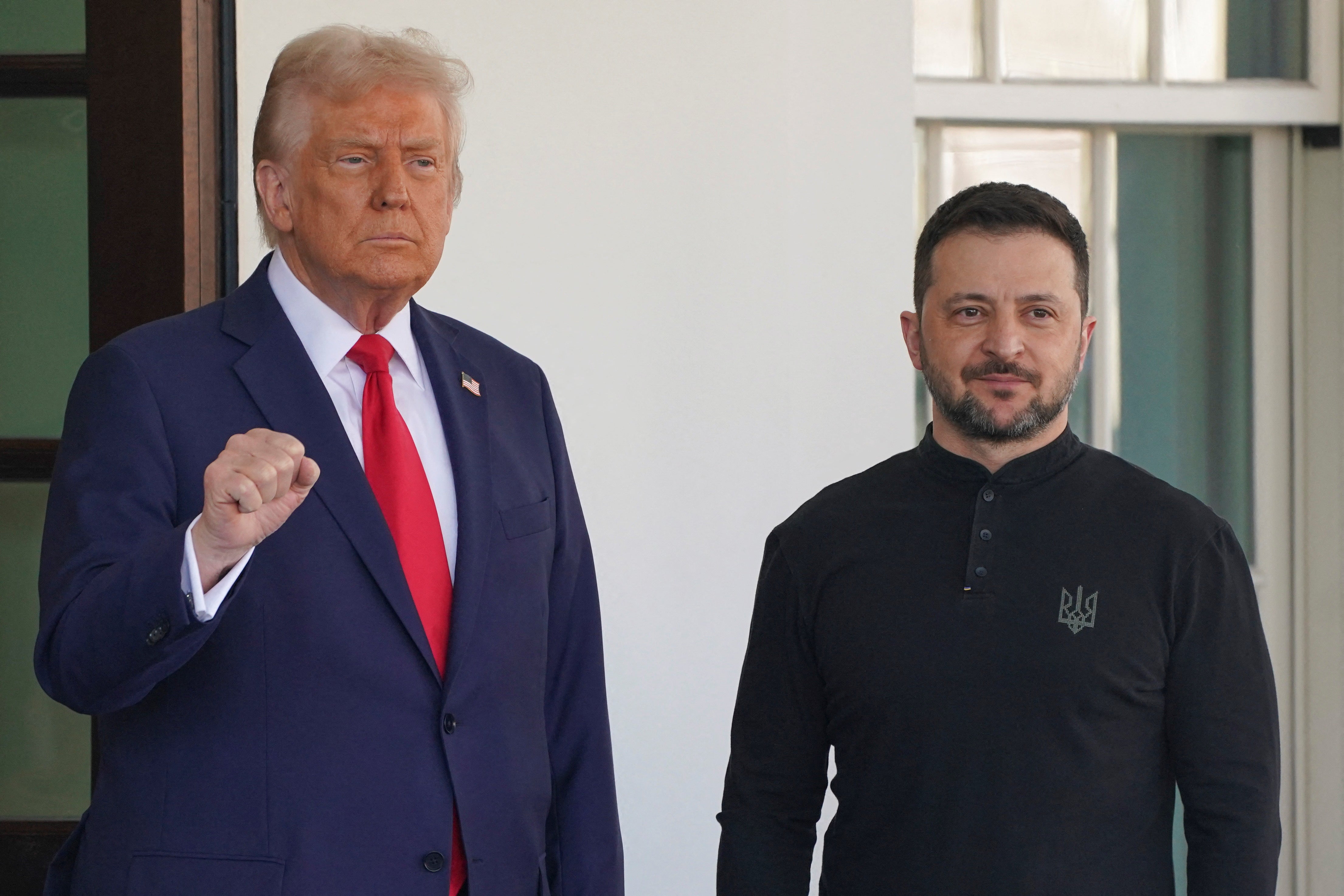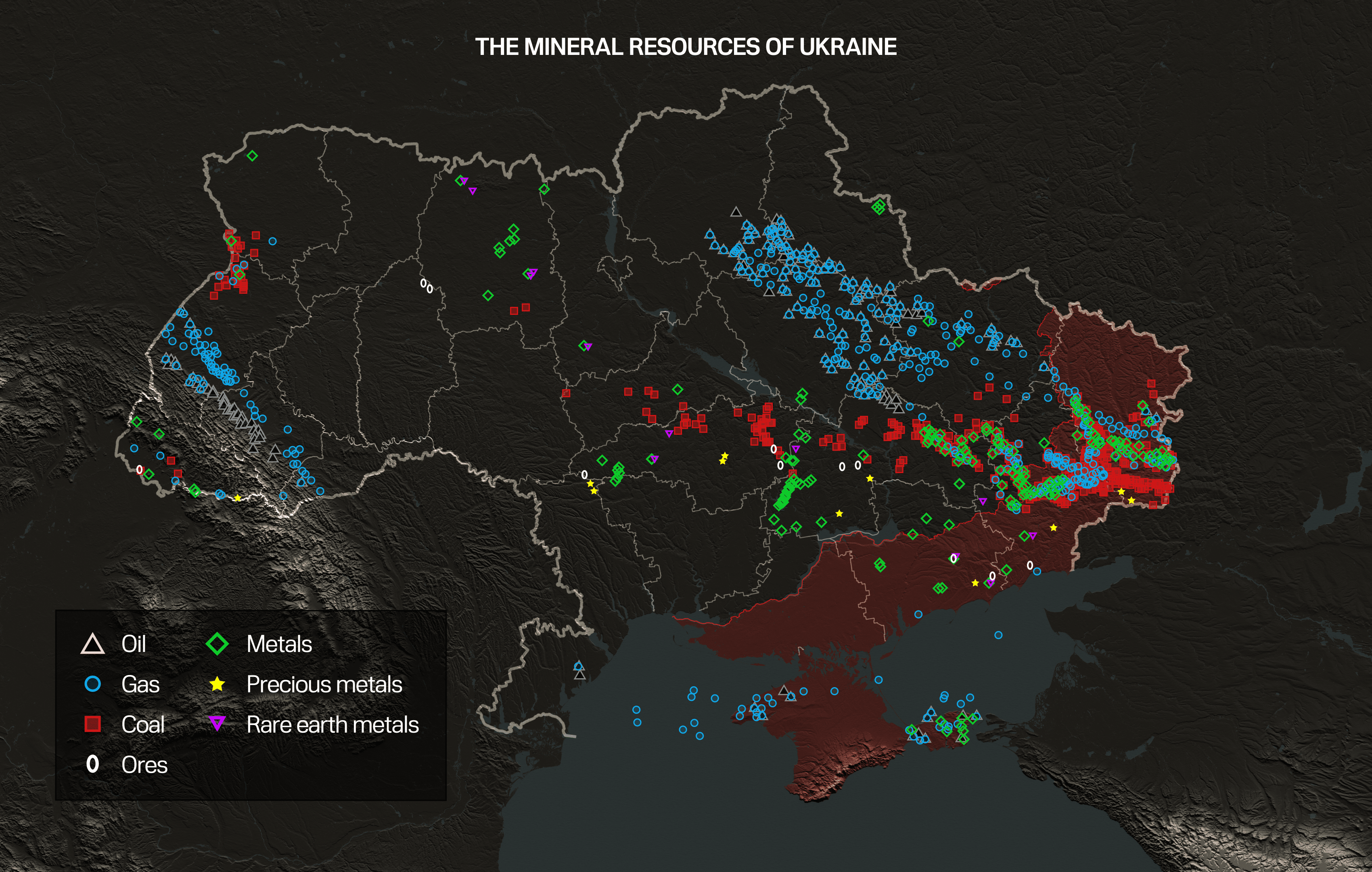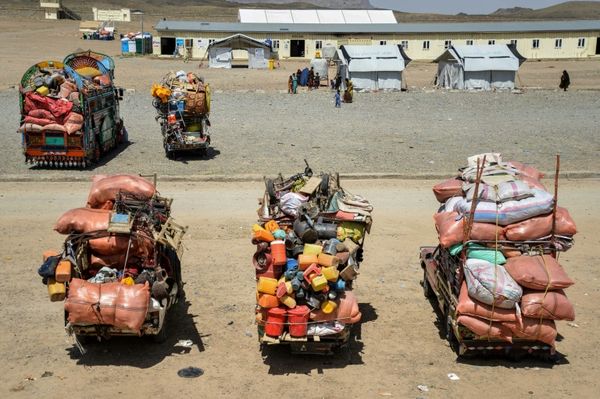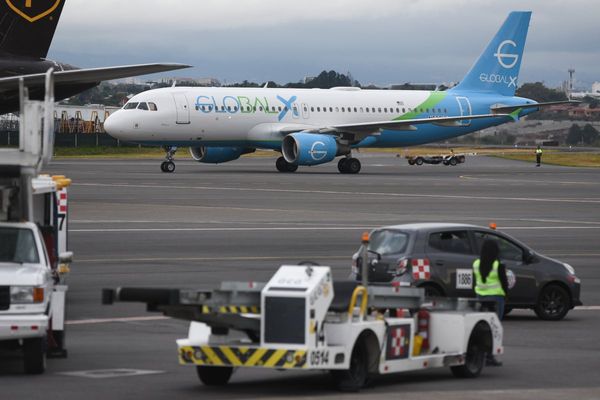US president Donald Trump has claimed a rare earth minerals deal with Ukraine - a crucial first step to achieving peace in the region - is back on after Volodymyr Zelensky sent him a letter signalling his willingness to sign.
After a series of spats between Mr Trump and Mr Zelensky culminated in the deal being temporarily canned last Friday and the Ukrainian leader being kicked out of the White House, the US president said in a speech to Congress that he had “received an important letter” seeking to end the disagreements.
Quoting from the letter, he said Mr Zelensky told him that “Ukraine is ready to come to the negotiating table as soon as possible to bring lasting peace closer. Nobody wants peace more than the Ukrainians.”
“My team and I stand ready to work under President Trump's strong leadership to get a peace that lasts,” Mr Trump quoted Mr Zelensky as writing. “We do really value how much America has done to help Ukraine maintain its sovereignty and independence.”
Mr Trump added that Mr Zelensky said he was ready to sign the minerals deal “at any. time that is convenient for you”.
Last week, Ukraine agreed to a revised deal with the US to secure support to end the war after the Trump administration dropped some of its toughest demands.

But a tense exchange between the two countries’ leaders on Friday brought the negotiations crashing down again, with the Ukrainian president berated in front of cameras by Mr Trump and his second-in-command JD Vance.
The deal, which was touted as a central point of peace negotiations, was left unsigned and what can be salvaged from it remains uncertain.
The US had been pushing for a deal that would grant it half of Ukraine’s revenues from critical minerals, oil, gas, and stakes in key infrastructure, such as ports, through a joint investment fund.
A White House official said that the minerals deal was a “first step to lasting peace” but Zelensky had “overplayed his cards”.
Below, The Independent looks at what could be included in the deal if it is struck.
What do we know about the deal so far?
While negotiations are up in the air, it has been reported the preliminary agreement establishes a fund in which Ukraine would contribute 50 per cent of proceeds from the “future monetisation” of state-owned mineral resources such as oil and gas, which would be invested in Ukrainian projects.
Included in the deal was a US commitment to back Ukraine’s economic development into the future. Deputy prime minister Olha Stefanishyna told the Financial Times that the minerals agreement is just one part of the bigger picture.
But the deal will not include the US security guarantees keenly sought after by Kyiv.
The US reportedly dropped Donald Trump’s initial demand for $500 billion in potential revenue from Ukrainian resources, a condition which was rejected out of hand by Ukrainian president Volodymyr Zelensky.
“I am not signing something that 10 generations of Ukrainians will have to repay,” Mr Zelensky had said.
Despite this, negotiations intensified in the days that followed, and it was soon announced that a preliminary agreement had been reached and that Mr Zelensky would travel to Washington to sign the deal.
Mr Trump suggested earlier this week that the deal was close to completion, hinting at Mr Zelensky’s upcoming visit.
The US president announced earlier that the war-torn country was on board with his plan. “We're telling Ukraine they have very valuable rare earths,” Mr Trump said.
What are Ukraine’s rare earths?
Ukraine is sitting on one of Europe’s largest deposits of critical minerals, including lithium and titanium, much of which is untapped. According to the Institute of Geology, Ukraine possesses rare earth elements such as lanthanum and cerium, used in TVs and lighting; neodymium, used in wind turbines and EV batteries; and erbium and yttrium, whose applications range from nuclear power to lasers. The EU-funded research also indicates that Ukraine has scandium reserves but detailed data is classified.
Mr Zelensky has been trying to develop these resources, estimated to be worth more than £12 trillion, based on figures provided by Forbes Ukraine, for years.
In 2021, he offered outside investors tax breaks and investment rights to help mine these minerals. These efforts were suspended when the full-scale invasion started a year later.
Anticipating the notoriously transactional Mr Trump might take an interest in this, Mr Zelensky then placed the mining of these minerals into his victory plan, which was drawn up last year.
The minerals are vital for electric vehicles and other clean energy efforts, as well as defence production.
Estimates based on government documents suggest that Ukraine’s resources are also highly varied. Foreign Policy found that Ukraine held “commercially relevant deposits of 117 of the 120 most-used industrial minerals across more than 8,700 surveyed deposits”.

Included in that is half a million tonnes of lithium, none of which has been tapped. This makes Ukraine the largest lithium resource in Europe.
Ukraine's reserves of graphite, a key component in electric vehicle batteries and nuclear reactors, represent 20 per cent of global resources. The deposits are in the centre and west.
It is not surprising that Mr Trump appears keen on benefiting from this, especially as China remains a key player in the mining of minerals such as titanium.
But Vladimir Putin’s invasion has not only delayed Ukraine’s plans to mine these minerals, it has also led to much of these resource-rich areas being destroyed and then occupied.
A little over £6 trillion of Ukraine’s mineral resources, which is around 53 per cent of the country’s total, are contained in the four regions Mr Putin illegally annexed in September 2022, and of which his army occupies a considerable swathe.
That includes Luhansk, Donetsk, Zaporizhzhia and Kherson, though Kherson holds little value in terms of minerals.
The Crimean peninsula, illegally annexed and occupied by Mr Putin’s forces in 2014, also holds roughly £165bn worth of minerals.
The region of Dnipropetrovsk, which borders the largely occupied regions of Donetsk and Zaporizhzhia, and sits in the face of an advancing Russian army, contains an additional £2.8 trillion in mineral resources.
Russian difficulties with major military operations seem likely to preclude a serious attempt to take the region but mining operations in the area would be perilous with Moscow’s soldiers so close.
Other ores are well within the sites of Russia’s forces. One lithium ore on the outskirts of a settlement called Shevchenko in Donetsk is less than 10 miles from the town of Velyka Novosilka, recently captured by Mr Putin’s troops.
However, while Ukraine has a highly qualified and relatively inexpensive labour force and developed infrastructure, investors highlight a number of barriers to investment. These include inefficient and complex regulatory processes as well as difficulty accessing geological data and obtaining land plots. Such projects would take years to develop and require considerable up-front investment, they said.
What happens next?
After Mr Zelensky and Mr Trump left the minerals deal unsigned on Friday, some senior officials are suggesting that negotiations are still possible, although the Ukrainian delegation was kicked out of the White House ahead of schedule.
“[Mr Zelensky] can come back when he is ready for peace,” Mr Trump wrote in a post on Truth Social.
US companies have expressed interest, according to Ukrainian business officials. But striking a formal deal would likely require legislation, geological surveys and negotiation of specific terms.
It is unclear what kind of security guarantees companies would require to risk working in Ukraine, even in the event of a ceasefire. And no one knows for sure what kind of financing agreements would underpin contracts between Ukraine and US companies.







